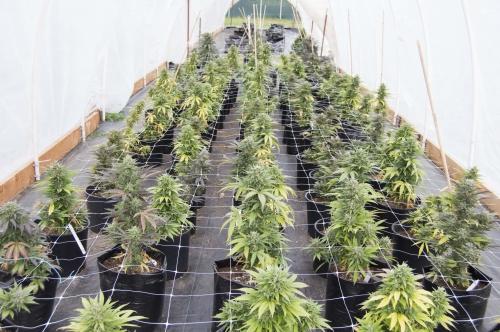Seed to stash: The journey of growing pot
April 28, 2016
Getting tired of your weed guy giving you sacks filled with seeds? We feel your pain. So we’ve done the research to see how hard or easy it is to start your own stash.
If Washington State House Bill 2629 is passed, it would allow residents to grow up to six plants legally. (According to the States’ documents, a class one civil infraction will be filed per plant to violators with less than eighteen plants.)
Class C felonies will be filed for violators with more than 40 plants.
When it comes down to growing a plant outdoors, it is important to think about the climate you live in. According to Crop King Seeds, a marijuana retail store based out of Vancouver B.C., marijuana grows best in tropical and Mediterranean climates.
“I would love to grow in the (Yakima) valley,” said Tim May, grower at The Green Vault in Chehalis, Wash.. “The climate on that side is perfect for growing weed.”
As with any crop, there are multiple ways to grow marijuana, from placing a seed in the ground and watering it, to doing a hydroponics style of growing, which does not involve soil.
“My job isn’t all fun and games, it’s hard work,” May said.
The first step to starting a plant is germination, according to howtogrowmarijuana.com. There are numerous ways to germinate cannabis seeds. This stage can be done simply by wrapping seeds in a damp paper towel and placing them somewhere warm and dark for a few days. The shells should soon begin to crack, allowing the roots to grow.
The next step is to then place the seeds in the potting soil. Howtogrowmarijuana.com says to place the seeds in the soil with the roots aiming down. Once planted, seeds will require daily watering.
Quite possibly the most important step in growing marijuana comes roughly five to six weeks after the plant has been potted. During this step, you select the gender of the plant. Most growers aim to grow female plants, which do not produce seeds.
But before this can be done, you need something called pre-flowers to so sprout. To sex a plant, the grower must identify the sex of the pre-flower sprouting on the node of the plant. Female preflowers are identified by howtogrowmarijana.com as small bumps with delicate white hairs. Males will appear as small bumps on the node – they are the beginning of the male pollen sac.
If you want to have a female plant, then simply remove the male preflowers with a pair of scissors.
While marijuana is growing, farmers tend to remove the top of the plants. According to TheNug.com, this step will allow light to penetrate deeper into the plant, which allows the plant to produce a larger yield.
With a number of little problems that can wipe out an entire plant in a number of days, marijuana plants require daily upkeep and attention for a healthy grow.
“It’s an everyday thing that you have to find time to do, you get used to it,” May said.
May called the plants his “babies,” saying that one plant can take up to fifteen minutes of attention a day.
No matter if you decide to grow in an indoors or outdoors environment, there are multiple problems growers face.
A common problem that growers face is a fast spreading necrotic fungus nicknamed bud rot. According to howtogrowmarijuana.com, bud rot is common in plants during their flowering phase.
The first sign of this fungi is when the leaves begin to wither and die. A grey clump of mold will appear on the site of the dead leaf. Left untreated, this can quickly infect an entire plant and turn a plant to slime. To remove the fungus from the plant, gently cut off the infected area from at least an inch below. If this step is not done with caution, the mold could spread tiny spores to other parts of the plant.
To prevent bud rot, howtogrowmarijuana.com recommends to make sure the area the plant is being grown is ventilated with a strong air flow. Growers may also chose to spray a fungicide on their plants, but make sure to wash off the fungicide before you smoke the weed, as it’s extremely toxic.
There are a number of problems you can run into when growing marijuana outdoors. One common factor is spider mites. Signs of these tiny arachnids are damaged leaves and a mess of small brown and yellow dots all over the leaves.
To prevent an infestation, growers tend to use pesticides to prevent insects harming their “babies.”
Indoor growers tend to face the problem of nutrient deficiency more often than with outdoor grown bud. By studying the leaves, growers can identify what nutrient the plant seems to be lacking and can simply add more of a certain nutrient to the plants feeding cycle.
“There are some tricks I’ve got up my sleeves,” May said. “Adding good-grade hydrogen peroxide to my water makes them explode with size.”
After weeks of tender loving care, plants are ready to harvest. When harvesting, the grower will need to remove each branch containing a bud, trimming all of the leaves and placing it upside down for roughly a week in a dark space with good air circulation, according to howtogrowmarijuana.com. This drying process could even take longer depending on the size of the bud the plant produced.
Once this bud is finally dried, it is time to enjoy your crop, whether it’s smoked, condensed into an oil for cooking, or into oil for vaping.



